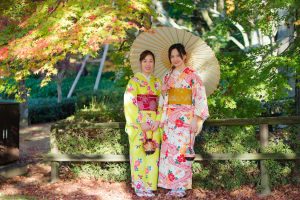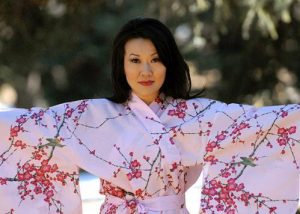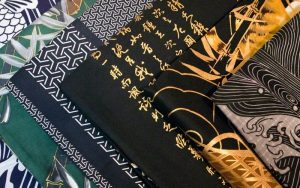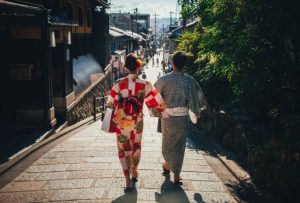In today’s fast-paced world, efficiency and reliability are paramount, especially when it comes to shipping customer orders. At our Kimono Shop, where we pride ourselves on offering beautiful kimono and yukata, we have a reputation for quick shipping. However, we have encountered significant challenges using USPS for our shipping needs, leading us to make a pivotal shift toward more reliable alternatives like UPS and FedEx. Here’s why we’ve chosen to move beyond USPS and what that means for you as our valued customer.
The Decline of USPS in Customer Shipping
Lack of Transparency
One of the most significant issues we face with USPS was the lack of transparency in package tracking. There were numerous instances where packages were not scanned promptly, or sometimes not scanned at all. For example, we would ship a package to a customer on Friday, yet it wouldn’t be scanned until Tuesday or Wednesday. This not only caused delays but also left customers in the dark, wondering if their package had even been shipped. Such inconsistencies are detrimental to our commitment to providing stellar customer service and maintaining our reputation for quick shipping.
Inconsistency of Transit Times
Another critical factor was the inconsistency of transit times. USPS’s delivery times could vary greatly, making it difficult to predict when a package would reach its destination. For a business like ours, where timely delivery is crucial, this unpredictability was simply unacceptable. Customers rely on us to receive their kimono and yukata promptly, whether for a special event or as a gift, and USPS’s inconsistency made it challenging to meet those expectations.
Increasing Costs
Over time, USPS has also seen a steady increase in shipping costs, which impacts our bottom line and, ultimately, our customers. While we understand that rising operational costs are a reality of business, we found that the escalating prices did not correlate with an improvement in service quality. When customers are paying for shipping, they expect reliability and efficiency, which USPS increasingly failed to deliver.
Condition of Post Offices
Lastly, the general condition of many post offices contributed to our decision to seek alternatives. Many USPS facilities are understaffed and face operational inefficiencies, leading to delays and mishandling of packages. This environment is not conducive to providing the high level of service our customers deserve and expect.
Transitioning to UPS and FedEx
Given the challenges we faced with USPS, we decided to transition to UPS and FedEx for shipping most customer orders. These carriers offer several advantages that align with our commitment to excellence.
Improved Transparency and Tracking
UPS and FedEx provide robust tracking systems that ensure packages are scanned at every stage of their journey. This level of transparency reassures our customers that their orders are on the way and allows them to monitor the progress in real-time. With accurate and timely updates, our customers can plan accordingly, knowing exactly when to expect their kimono and yukata.
Consistent and Reliable Transit Times
Both UPS and FedEx are known for their consistent and reliable transit times. By partnering with these carriers, we can provide more accurate delivery estimates, ensuring that our customers receive their orders promptly. This reliability is crucial for maintaining the trust and satisfaction of our customers, particularly for those who need their orders by a specific date.
Competitive Shipping Costs
While shipping costs continue to be a consideration for any business, we have found that UPS and FedEx offer competitive rates that reflect the quality of service provided. By negotiating favorable shipping terms, we are able to offer our customers reasonable shipping prices without compromising on the speed and reliability of delivery.
Professional Handling and Facilities
UPS and FedEx boast state-of-the-art facilities and professional handling of packages. This ensures that our products are treated with care from the moment they leave our warehouse until they reach our customers’ hands. The professional infrastructure of these carriers significantly reduces the risk of damage or loss during transit, further enhancing our customers’ experience.
Why This Matters to Our Customers
Our switch from USPS to UPS and FedEx is ultimately about enhancing your shopping experience. By choosing carriers that prioritize transparency, consistency, and reliability, we ensure that your orders are delivered promptly and efficiently. Whether you’re purchasing a kimono, yukata, or any other product from our shop, you can rest assured that your order is in good hands from start to finish.
Conclusion
At our Kimono Shop, our customers’ satisfaction is our top priority. The decision to move away from USPS and adopt UPS and FedEx for most shipping was made with this commitment in mind. We believe that by offering improved transparency, consistent transit times, competitive costs, and professional handling, we can provide a superior shipping experience for our valued customers.
Thank you for your continued trust and support. We look forward to serving you better with our new and improved shipping solutions.
Interested in experiencing our quick and reliable shipping firsthand? Visit our shop today and explore our wide range of kimono and yukata. Your perfect piece is just a few clicks away, and now, it’ll arrive even faster.












